Frequency Biennial Country Russia Most recent 25–30 August 2015 Location Moscow | Venue Ramenskoye Airport Established 1992 Attendance c. 404,000 in 2015 Genre Air show | |
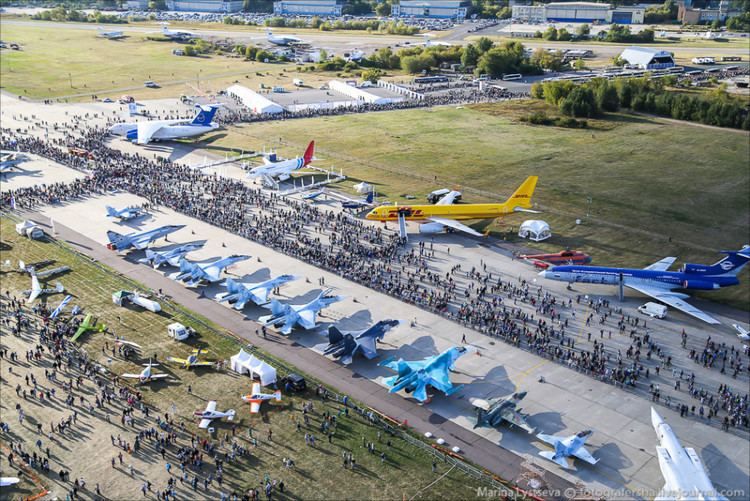 | ||
MAKS (Russian: МАКС, Russian: Международный авиационно-космический салон, transliterated as Mezhdunarodnyj aviatsionno-kosmicheskij salon, "International Aviation and Space Show") is an international airshow held at Zhukovsky International Airport, the home of the Gromov Flight Research Institute in Zhukovsky, 40 km (25 mi) southeast of Moscow, Russia. The event was organized by the Russian Ministry of Industry and Trade until 2009, more recently by the Government of Moscow and Aviasalon. The first show, Mosaeroshow-92, was held in 1992. Since 1993, the airshow was renamed as MAKS and is held biennially on odd years.
Contents
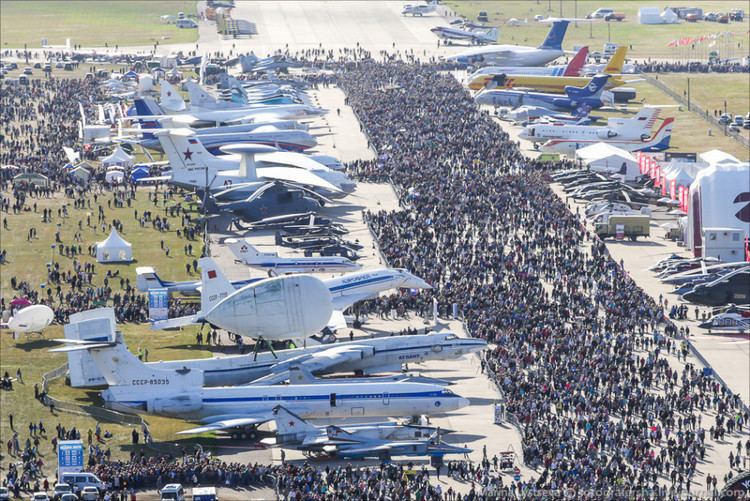
MAKS is an important event for the Russian aviation industry and the Commonwealth of Independent States (CIS). Although it started mainly as an entertainment event, the show soon became a marketplace where Russian aerospace companies could negotiate export contracts and Russian air carriers could make foreign contacts.
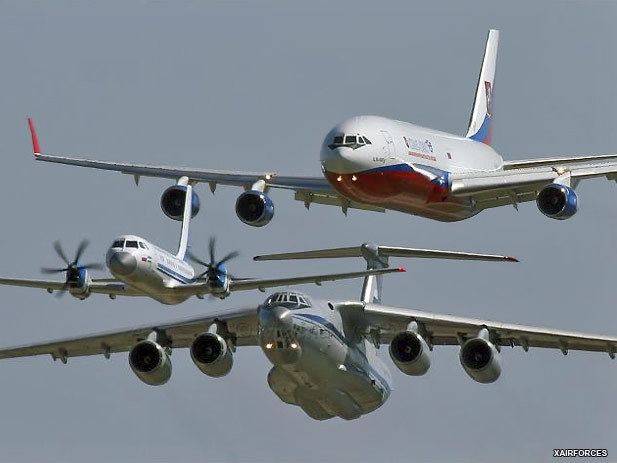
Background and history
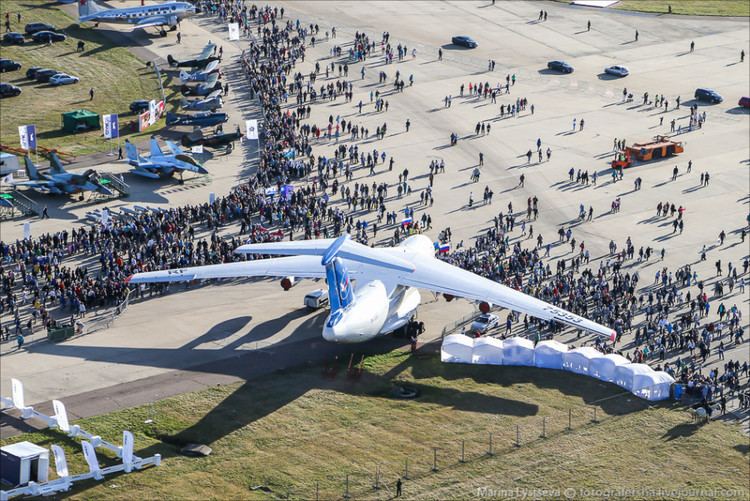
The airshow's history traces back to 1911, when one was held in Mikhailovskiy square in Saint-Petersburg. The USSR held annual airshows on the Tushino airfield in Moscow 22 years later. Its history in Zhukovskiy, however, began much later with the Engineering Show by Central Aerohydrodynamic Institute in 1990.
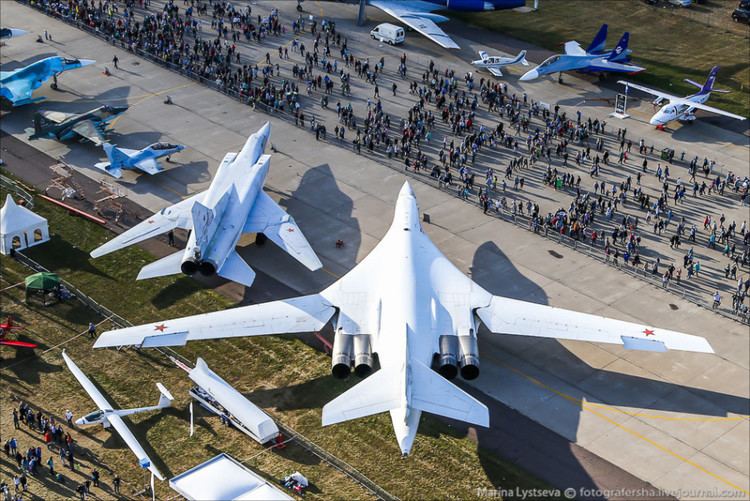
The objective of the MAKS airshow is to demonstrate leading technologies and to open up the Russian aerospace industry to the international market. A large portion of the show is dedicated to holding scientific conferences and symposia, under the auspices of Russia's Central Aerohydrodynamic Institute (TsAGI).
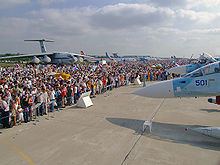
The airshow is held in the city of Zhukovsky, at Zhukovsky International Airport, which is the home of the Gromov Flight Research Institute. After the dissolution of the Soviet Union, many aviation companies eventually moved to Zhukovsky, using the Gromov Flight Research Institute's airfield for MosAeroShow-92 held on 11–16 August 1992. A second show was held in 1993, now renamed MAKS. Since then the airshow has been held biannually. It lasts for six days, three of which are open to the general public.
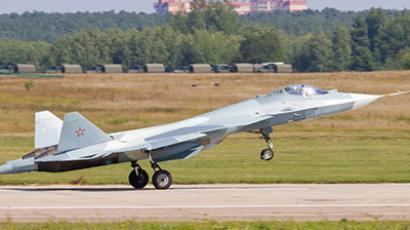
Most of previous MAKS airshows were systematic: It usually opens with the attendance of the President of Russia, followed by company talks, and concludes with aircraft demonstrations by aerobatic teams such as the Russian Knights, Swifts, and the foreign Patrouille de France as well as Frecce Tricolori.
Some highlights include:
Incidents
- The write-off of a Yak-38 scheduled to drag the flag of the airshow prior to MosAeroShow-92: a dangerous turn after a maneuver appeared, which triggered the automatic emergency evacuation system of the aircraft, ejecting the pilot. After this incident a Mi-8 was called to take the place of the destroyed Yak-38.
- The pilot from a Su-15 ejected during an experimental low-altitude ejection of a dummy due to the inability to regain control.
- The prototype amphibious aircraft Be-103 crashed on the day before the opening of MAKS-1997. After takeoff at 11:14 local time, at an altitude of about 100 meters, the pilot attempted to stay in his designated flight zone by a steep turn, which unintentionally set the aircraft into a steep climb, causing a stall at a supercritical angle of attack without adequate altitude to recover. The pilot, Vladimir Nikolaevich Ulyanov, was killed.
- On August 16, 2009, while preparing for the MAKS-2009, two Su-27s from the Russian Knights crashed into each other, killing the lead pilot and the commander of the team, honored military pilot of the Russian Federation, Guards Colonel Igor Tkachenko, and injuring several other people, including residents at "Belozyorikha" garden community. The death of Tkachenko was paid tribute to by a minute of silence at the opening of the airshow.
- The wing from an An-70 getting ready for takeoff scratched the ladder of a stationary aircraft (it was unclear whether it was an Il-76 or an Il-96-400). No one was hurt in this accident, nor were the aircraft, and the ladder was replaced within 5 minutes. Antonov denied the occurrence of this collision, and the An-70 flew to Kiev on August 20.
- An L-39 from the Baltic bees left the runway while landing.
- A PAK FA suffered a compressor stall while accelerating, after which a drogue chute was deployed and the aircraft stopped on the runway.
Interior criticism
A main criticism of the airshow is the large influx of visitors (up to 300,000 people per day). According to some sourced, the administration is not doing enough to withstand such a massive number of visitors, which, together with tight security, caused problems such as long queues, congestion and transportation problems. The high cost of public electricity and the lack of air conditioning in the exhibition halls are also subject to criticism. Some critics accused the organizers for still showing outdated Soviet-era aircraft.
Critics believe that the MAKS is still inferior to other leading airshows of the world, and do not agree with other parts of Russian and western press. The Danish daily newspaper "Børsen" comments that the MAKS is not worse than the Le Bourget and the Farnborough show. Also, a number of authoritative international organizations such as the Union of Aerospace Industry in Germany and the Chamber of Commerce in France noted the high quality of the event in the official review for MAKS-2009. The airshow administration argues that the airshows are conducted in a highly organized fashion, and is the hallmark of Russia. From a financial perspective, the head of the state corporation "Rostekhnologia", Sergey Chemezov, the price of participation in MAKS-2009 is quite acceptable as the rented space is about 10% lower than that at the Le Bourget airshow and 1.1 to 1.8 times lower than that at Farnborough.
